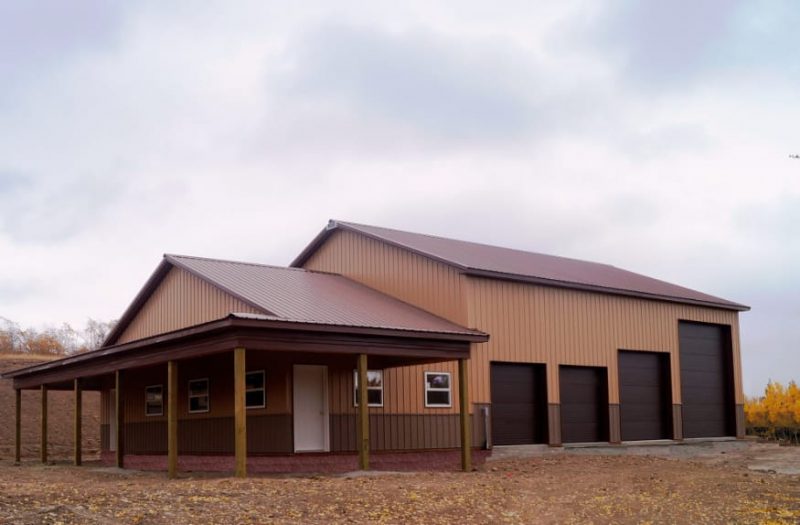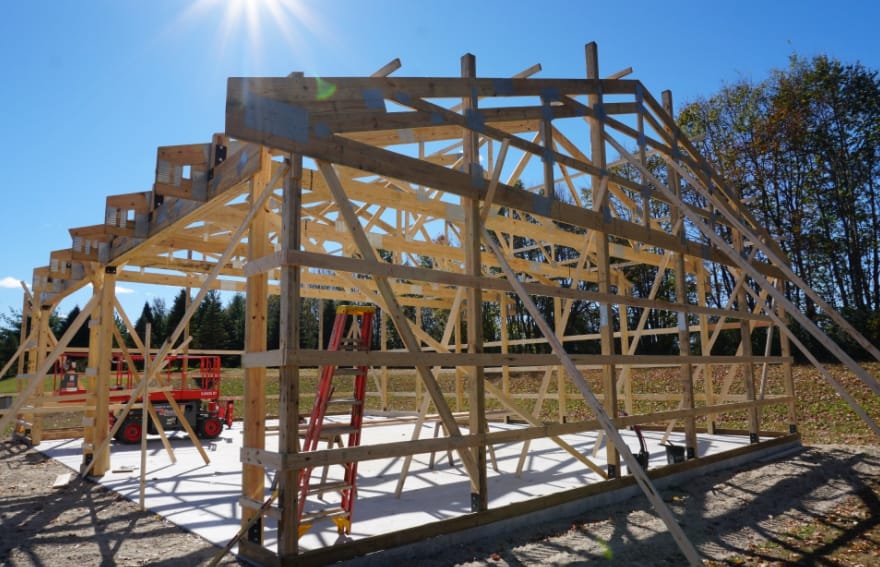A pole barn, also known as a pole building, is a large agricultural structure with no basement, a high ceiling, and wide-open spaces.
Although the pole barn is mainly built on farms, it can be built in the backyard as well. These structures are ideal for a variety of purposes.
If you need more space for your belongings or even a storefront, a pole barn is a perfect choice. They are easy to construct and do not necessitate a high level of construction knowledge.
The best part about building a pole barn is that they are extremely adaptable. So you can modify them in any way that suits your needs.
Keep in mind that the pole barn design itself is similar to the shed designs. The main difference is that the pole barn is fixed on poles, and it can be as big as you want.
Here are some useful tips you need to know about pole barns before you start building.
1. Use of Your Pole Building

First of all, you need to ask yourself what you want out of your pole barn. You need to have in mind that the way you intend to use your pole barn will also determine how you are going to build it.
For example, if you intend to use it both in the summer and in the winter, an insulating pole barn ceiling is a must.
And there are other things to consider like building requirements, proper ventilation, material selection. All these things are determined with the use of the building.
2. Permits, Building Codes, and Specifications
Learn about your neighborhood’s zoning laws, building codes, and covenants. Keep in mind that the building codes for a man cave pole barn will differ from those for a storage pole barn.
Some jurisdictions are arranged all over counties, while others are arranged inside cities or towns. Before you start, check with your local municipality to see what codes and zoning regulations you would need to know.
Keep in mind that permit costs are determined by the following factors: building size, building segment, and jurisdiction.
3. Build a Solid Foundation
Every pole barn needs a foundation. The traditional foundation for a pole barn consisted of poles embedded directly into the ground.
Nowadays, it is more common to see a concrete slab used as the foundation for a pole barn. When it comes to pole barn foundations, there are several factors to consider: vertical and lateral load resistance, and frost protection.
Choosing the correct foundation for your pole barn is one of the crucial things. Foundations are important to any structure, without them buildings would not have any stability.
4. Choose Type of Materials
Purchasing less expensive, lower-quality materials to save money upfront is generally not a good idea. Consequences of that approach are likely to result in higher maintenance, replacement, and energy costs.
You need to choose materials that will last as long as your building does. There is one more thing to consider the aesthetics of your property and home.
In case the selected material of your pole building doesn’t match the surroundings, consider coloring it.
5. Prevent Heat Loss and Gain with Proper Insulation

Never underestimate the importance of insulation when building a pole barn. Insulation can help to keep your pole barn at a consistent temperature.
And it will also help to prevent deterioration and damage. In other words, if the airflow is uncontrolled, it can lead to excess condensation and moisture.
And these will cause mildew, mold, and rust that will damage the pole barn along with anything else inside. Take your time to decide what insulation will suit your needs.
6. Choose Windows and Doors That Will Maintain Comfort
Of course, your window and door choices will be influenced by how your pole building will be used. It makes no difference whether you plan to use your pole barn as a garage or a workspace.
Keep access and ventilation in mind when choosing doors and windows. Although it may appear obvious, doors and windows are common building features that promote airflow.
Whichever way the wind is blowing, you’ll want to open the doors and windows for the best ventilation. So it is recommended to evenly distribute doors and windows for better results.
7. Pole Barn Hardware
Getting the right hardware and fastening up your structure is just as important as anything else you do during construction.
You’ll need pole barn nails for framing and fastening, as well as lateral bracing and wall framing hardware.
Remember to choose the appropriate hinges and latches for the type of structure you’ll be constructing and the features that will be included.
Building a pole barn can be tricky so it’s best to consult with the contractor about everything above.
